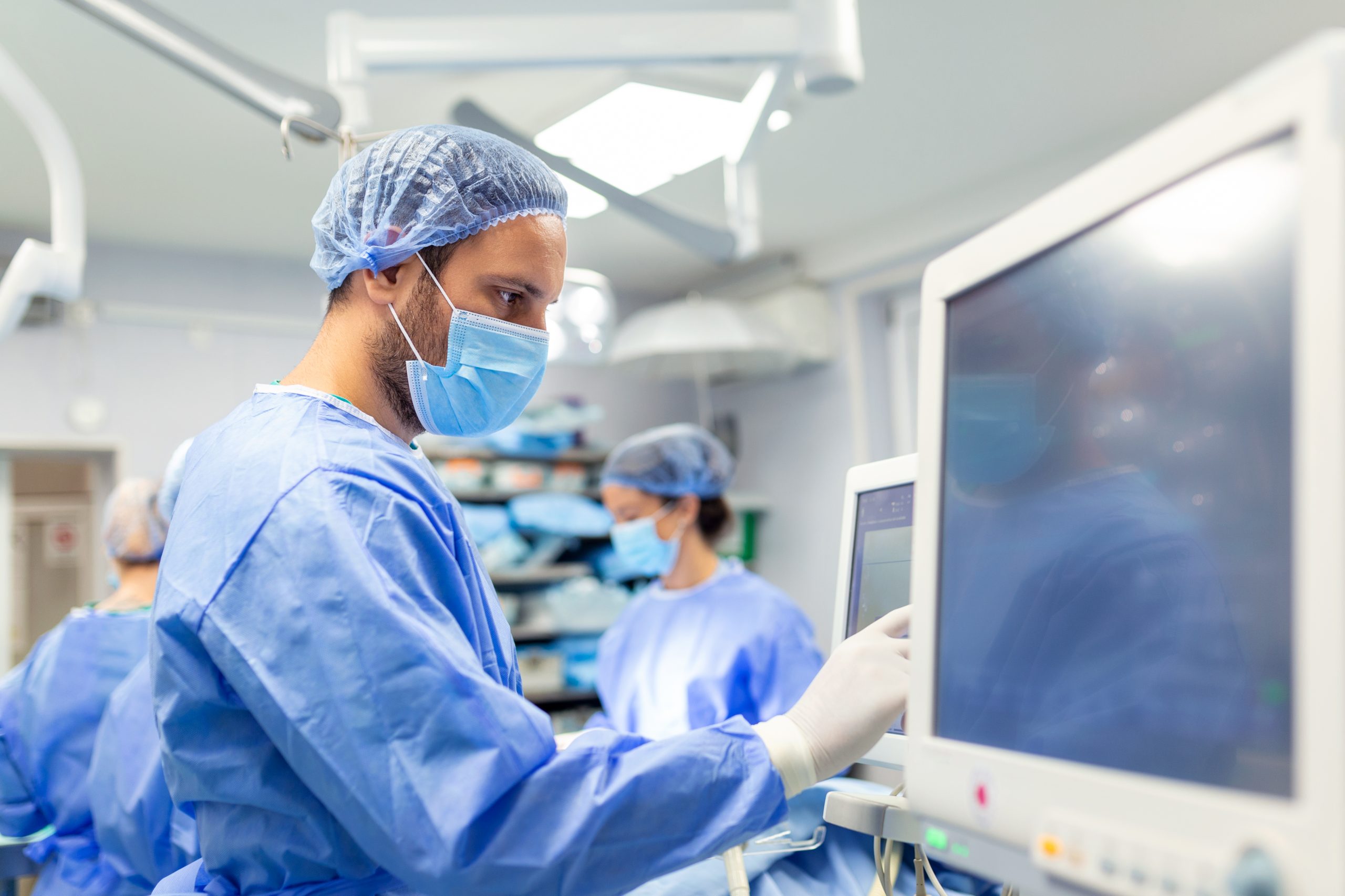

The da Vinci single port (SP) robotic surgical system, which made its clinical debut in 2018, is a significant advancement in robotic surgery technology. While it does not completely replace the capabilities of the multi-port system, it does provide a potential new approach for a number of significant robotic urological procedures.
Jean Joseph, M.D., Winfield W Scott Professor and Chairman of the URMC Department of Urology, was one of the first surgeons to use the original Intuitive da Vinci system over two decades ago and has helped pioneer and promote later robotic systems. His expertise in the field of robotic surgery has put him in the spotlight, showing live surgeries for peers to watch at major professional conferences such as the American Urological Association and the North American Robotic Urology Symposium.
Dr. Joseph reviewed the contrasts between SP and multi-port systems, how surgeons will need to adapt to the system’s controls, the value and potential of SP, and the issues hospitals should consider when purchasing an SP system.
Distinguish between single-port and multi-port robotic surgical systems
Instead of three to five separate incisions, the SP method uses a single entry into the patient to accommodate all of the tools. This has apparent potential benefits for patients, such as less scarring, less pain and less need for opioids after surgery, earlier discharge, and faster recovery. The tools in the SP system are smaller, which, coupled with other technological developments such as enhanced optics, improves the system’s precision and allows surgeons to do difficult surgeries in more constrained locations.
What is the surgical learning curve?
There are distinctions between the two systems that necessitate training for surgeons to achieve competency. The instruments, for example, branch out from a single trocar, hence the method of triangulating them to the correct position differs. Hand positioning on the controls is different to avoid clashing the instruments. The smaller instruments allow for more detailed and accurate actions, but this compromises some instruments’ dexterity—it can be more difficult to grasp and hold an SP compared to a multi-port system.
Expert robotic surgeons can quickly become acquainted with the SP system through training and simulation, as we have seen in Rochester and other high-volume, established robotic surgery centers. Before moving on to SP, less experienced surgeons would most likely need to master the multi-port system.
Is there any circumstance in which it appears to outperform multi-port systems?
SP robotic surgery is utilized for a variety of treatments, including pyeloplasty, nephrectomies, prostatectomies, cystectomies, and urinary tract reconstruction, and its applicability in other procedures are being investigated. Improvements to the SP system’s tools may potentially indicate potential moves forward in improving outcomes. A recent access kit, for example, consists of a balloon that functions as an extension of the abdominal cavity, making it easier to examine cancer margins.
The unanswered question is what role SP robotic systems should play amid the array of technologies available to surgeons. It is normal to be excited about new technologies. SP robotic surgery is a significant advancement that may allow for surgeries such as transvesical cystectomies that are now beyond the capability of multi-port systems. Simultaneously, we must comprehend the benefit SP provides to our patients, as well as the impact on intraoperative and postoperative outcomes. Many research are being conducted to answer these questions, but it is obvious that SP improves cosmetic outcomes, patient satisfaction, post-surgical pain, and recovery.
What advise would you give to organizations considering purchasing a single-port system?
It will take time to examine and finally determine the full potential of this new technology, as with any new tool. SP is a promising tool that should be included in the surgical armamentarium of a high-volume surgical institution like ours. Our surgeons are developing training programs to help with the acceptance of such new technology. We use the SP to do various procedures where we previously used the multiport exclusively. The SP robot has become our preferred form of intervention via the transvesical route for certain procedures, such as basic prostatectomies.
The use case for SP robotic surgery is constantly evolving, and while urologists are the major users of the system, it also has potential uses in ear, nose, and throat procedures.
more recommended stories
 Phage Therapy Study Reveals RNA-Based Infection Control
Phage Therapy Study Reveals RNA-Based Infection ControlKey Takeaways (Quick Summary) Researchers uncovered.
 Safer Allogeneic Stem Cell Transplants with Treg Therapy
Safer Allogeneic Stem Cell Transplants with Treg TherapyA new preclinical study from the.
 AI in Emergency Medicine and Clinician Decision Accuracy
AI in Emergency Medicine and Clinician Decision AccuracyEmergency teams rely on rapid, accurate.
 Innovative AI Boosts Epilepsy Seizure Prediction by 44%
Innovative AI Boosts Epilepsy Seizure Prediction by 44%Transforming Seizure Prediction in Epilepsy Seizure.
 Hypnosis Boosts NIV Tolerance in Respiratory Failure
Hypnosis Boosts NIV Tolerance in Respiratory FailureA New Approach: Hypnosis Improves NIV.
 Bee-Sting Microneedle Patch for Painless Drug Delivery
Bee-Sting Microneedle Patch for Painless Drug DeliveryMicroneedle Patch: A Pain-Free Alternative for.
 AI Reshapes Anticoagulation in Atrial Fibrillation Care
AI Reshapes Anticoagulation in Atrial Fibrillation CareUnderstanding the Challenge of Atrial Fibrillation.
 Hemoglobin as Brain Antioxidant in Neurodegenerative Disease
Hemoglobin as Brain Antioxidant in Neurodegenerative DiseaseUncovering the Brain’s Own Defense Against.
 Global Data Resource for Progressive MS Research (Multiple Sclerosis)
Global Data Resource for Progressive MS Research (Multiple Sclerosis)The International Progressive MS Alliance has.
 AI Diabetes Risk Detection: Early T2D Prediction
AI Diabetes Risk Detection: Early T2D PredictionA new frontier in early diabetes.

Leave a Comment